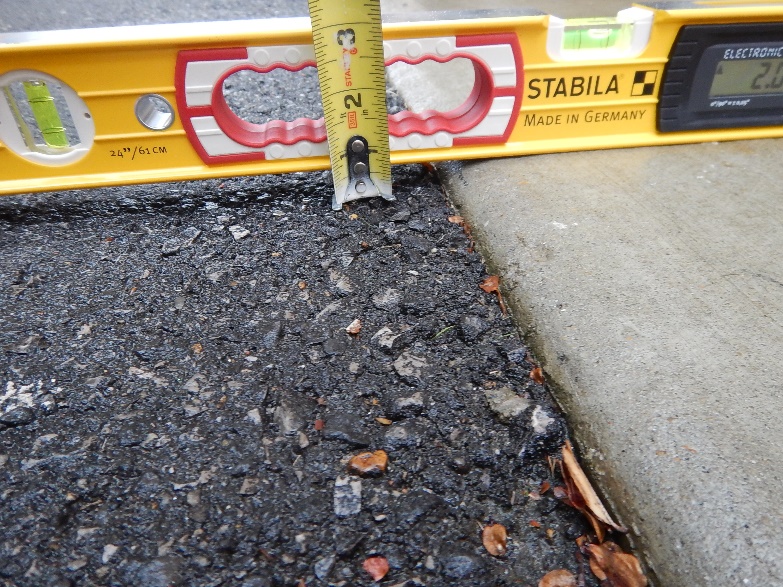
Too large a troweled edge on a curb ramp can result in a noncompliant ramp. Illustrated in the photograph there is a 3/4-inch radius and a just about a one-inch differential elevation. The United State Access Board “Guide to the ADA Standards” expands on the issue of edges on accessible routes. This is an essential tool in understanding the reasoning behind the physical guidelines of the Americans with Disabilities Act. The Guide states:
“Changes in level can be up to ¼” without treatment or ½” if beveled with a slope no steeper than 1:2. Changes in level above a ½” must be treated as a ramp or curb ramp (or a walkway if a slope no steeper than 1:20 can be achieved). These specifications apply to all portions of accessible routes, including thresholds and carpet trim.”
Pertaining to the photograph, the edge is out-of-compliance for both height and slope. A common remediation attempt is to grind the edge. Depending on the slope of the main ramp, this will remove the edge differential height, but is not likely make the slope compliant. Another repair approach would be to make a small concrete patch. This remediation could result in a worse situation because of a small work area. Our recommended remediation is to replace the entire ramp. It will be a larger area to work. There should not be difficulty matching the elevations of the adjacent sidewalk; and the finished ramp will look like everyone knew what they were doing.
Zimmer Consultants photograph